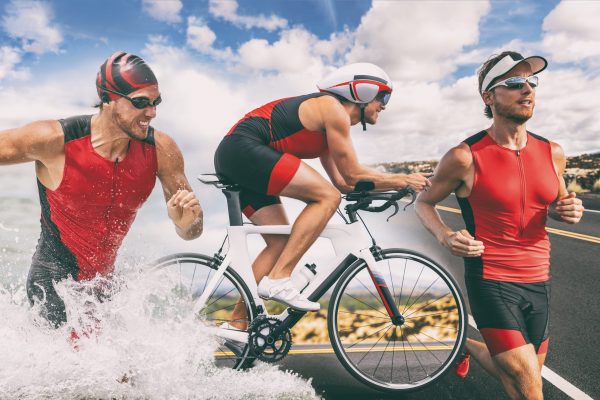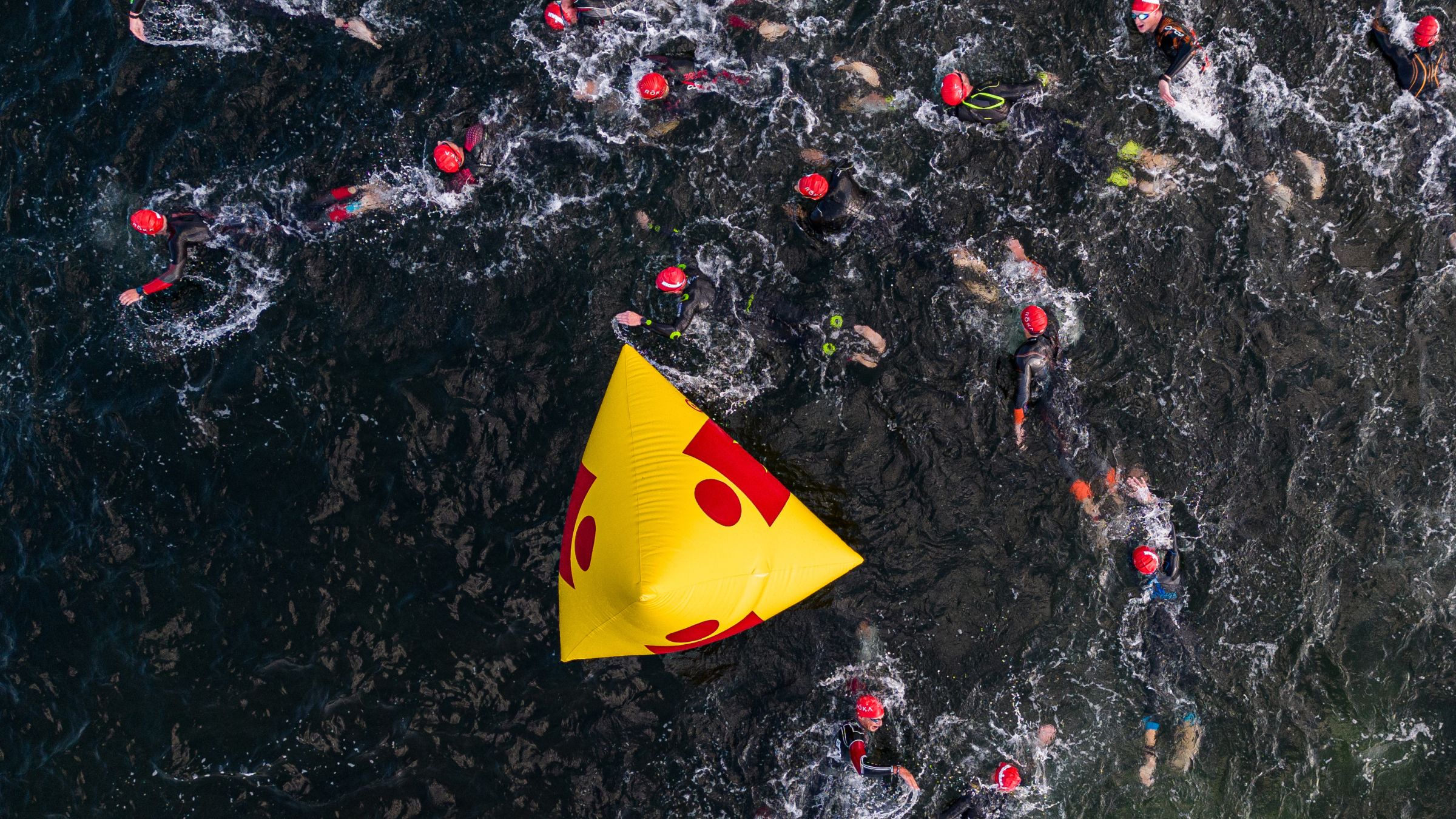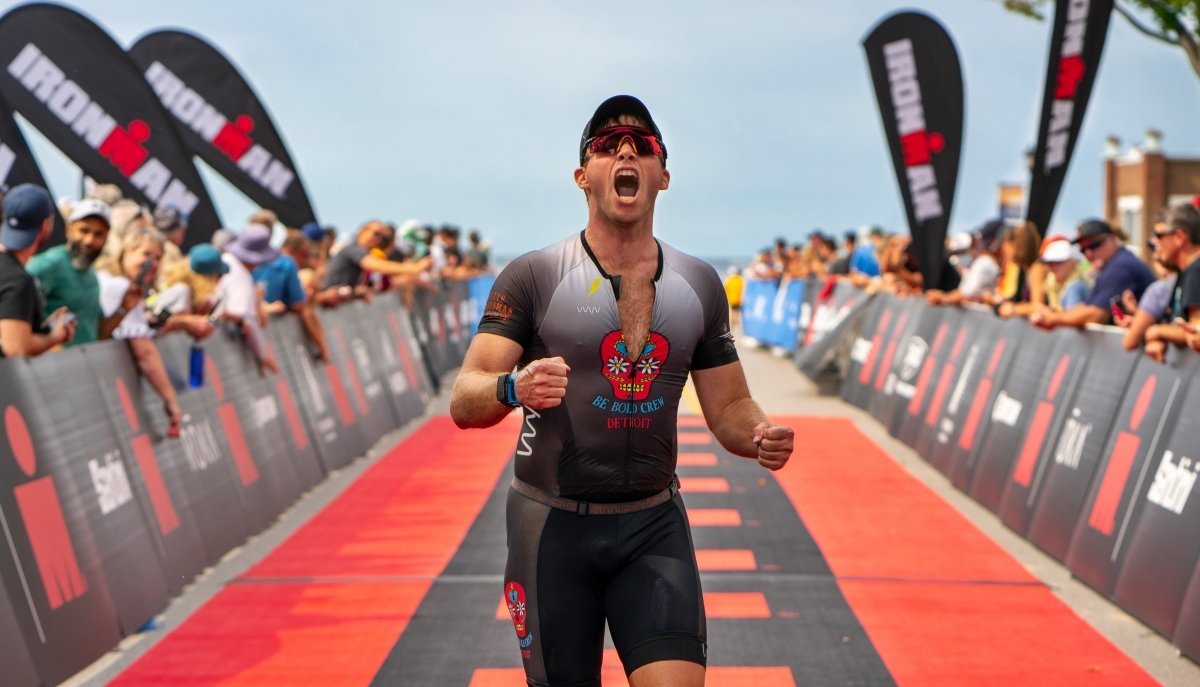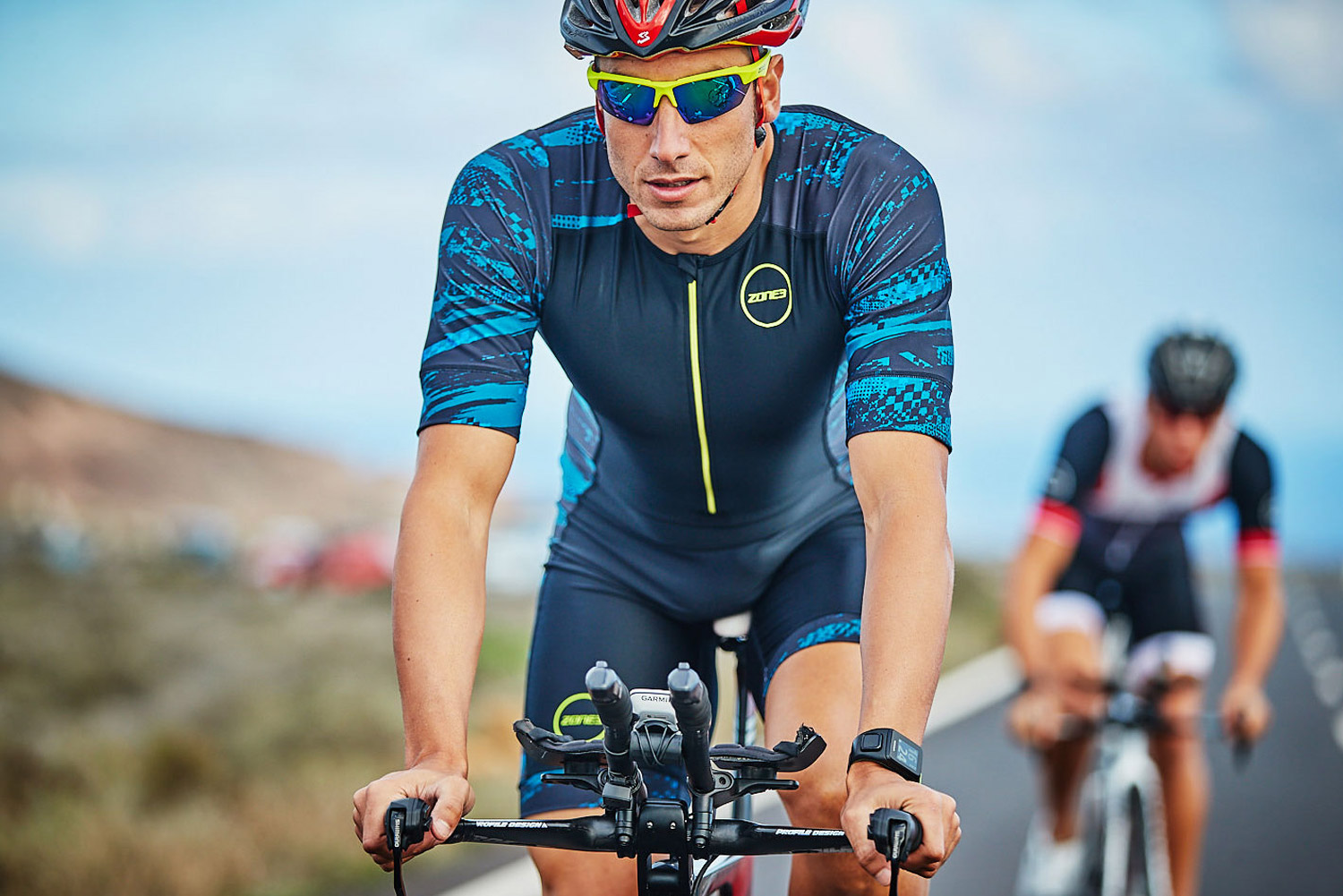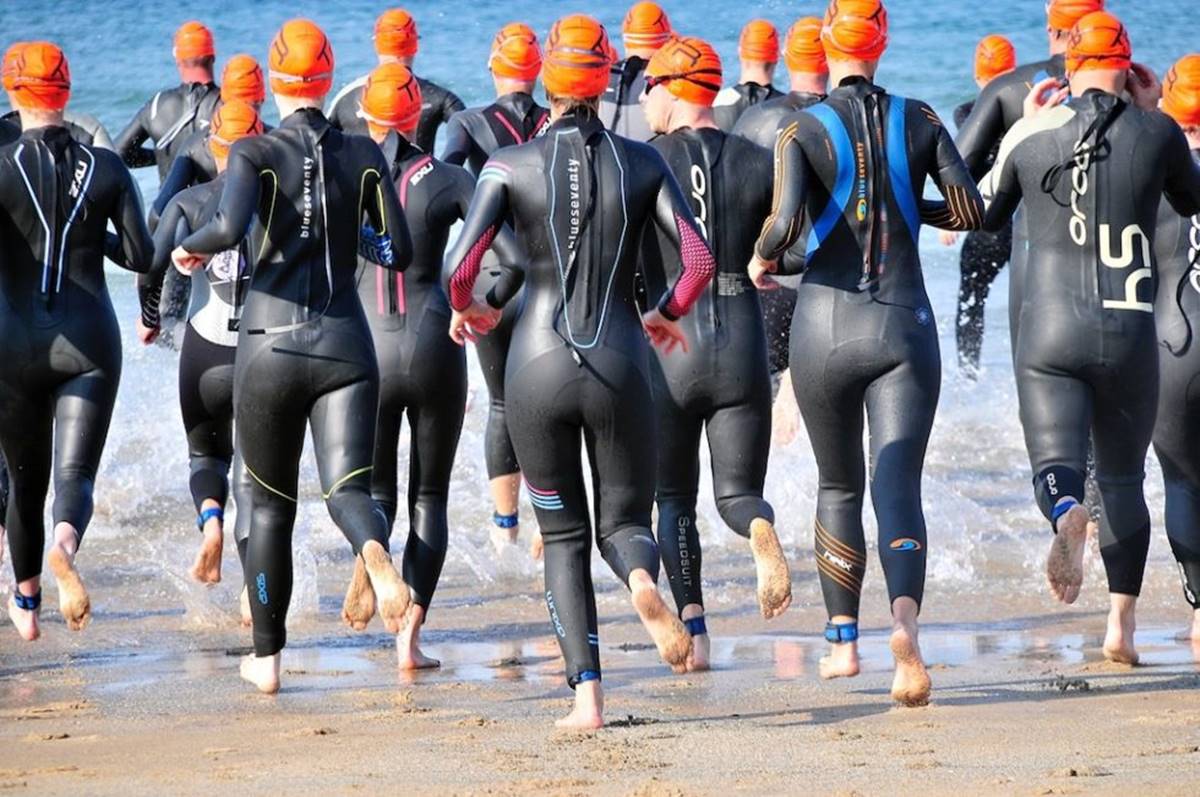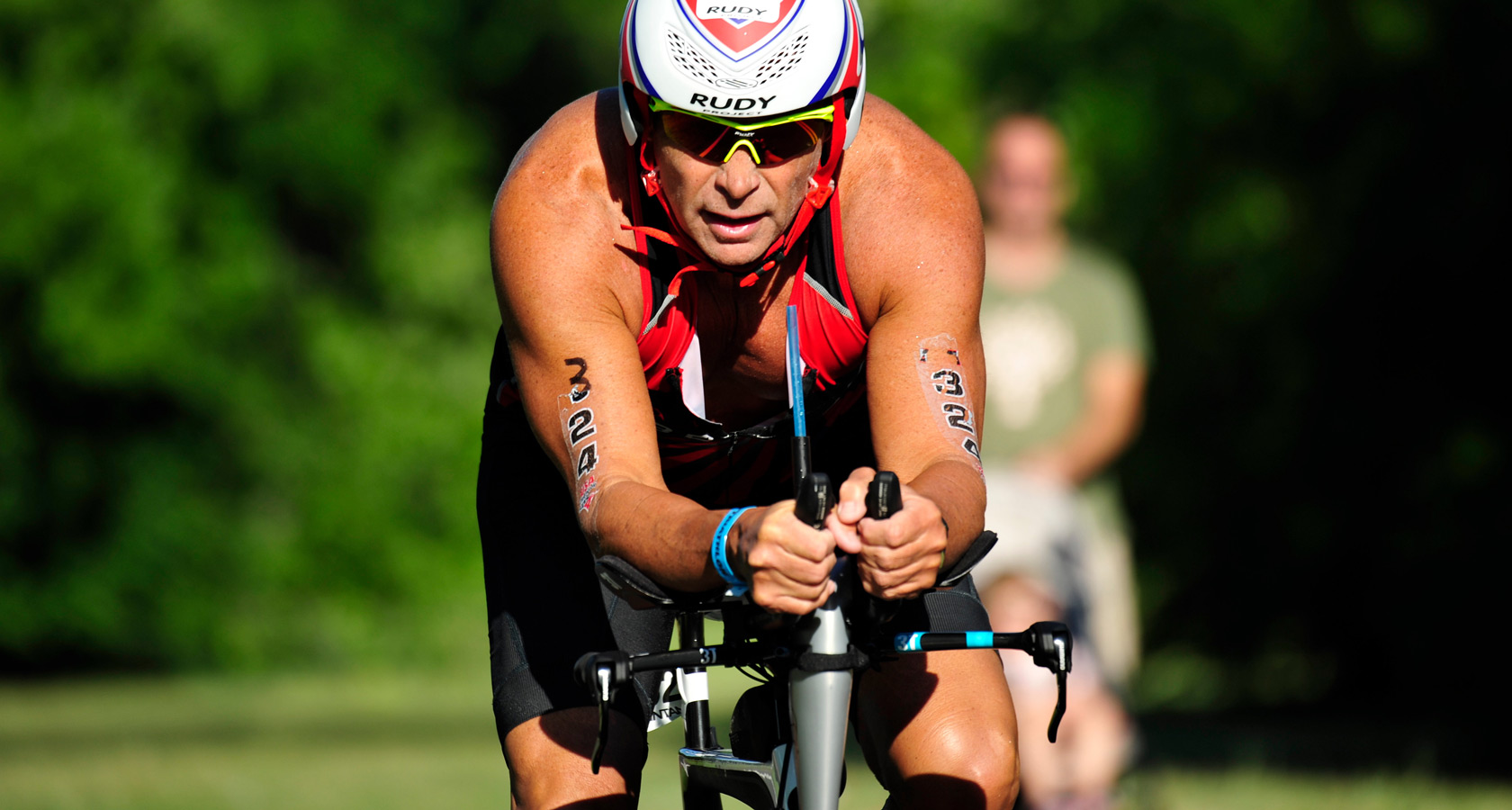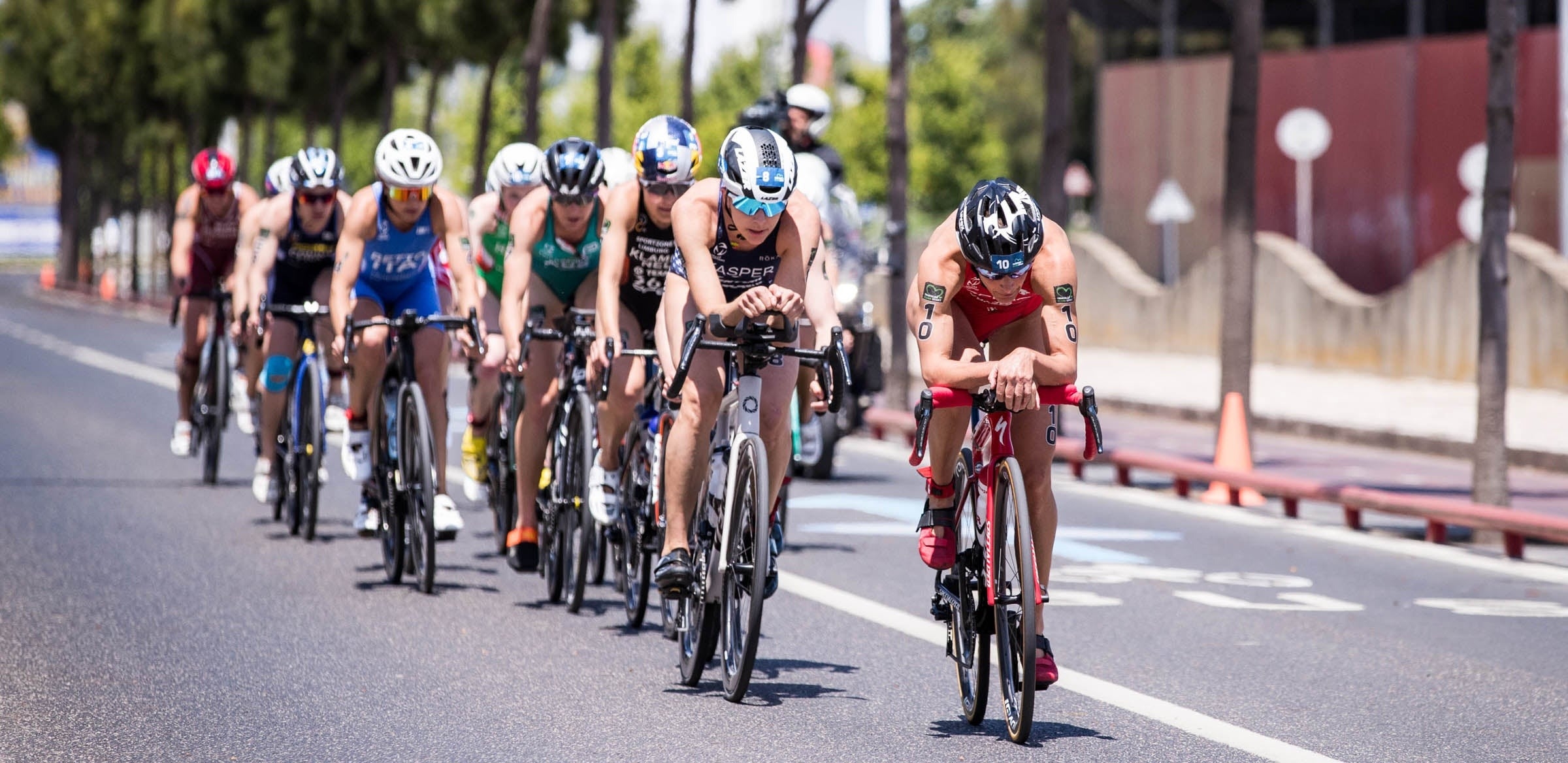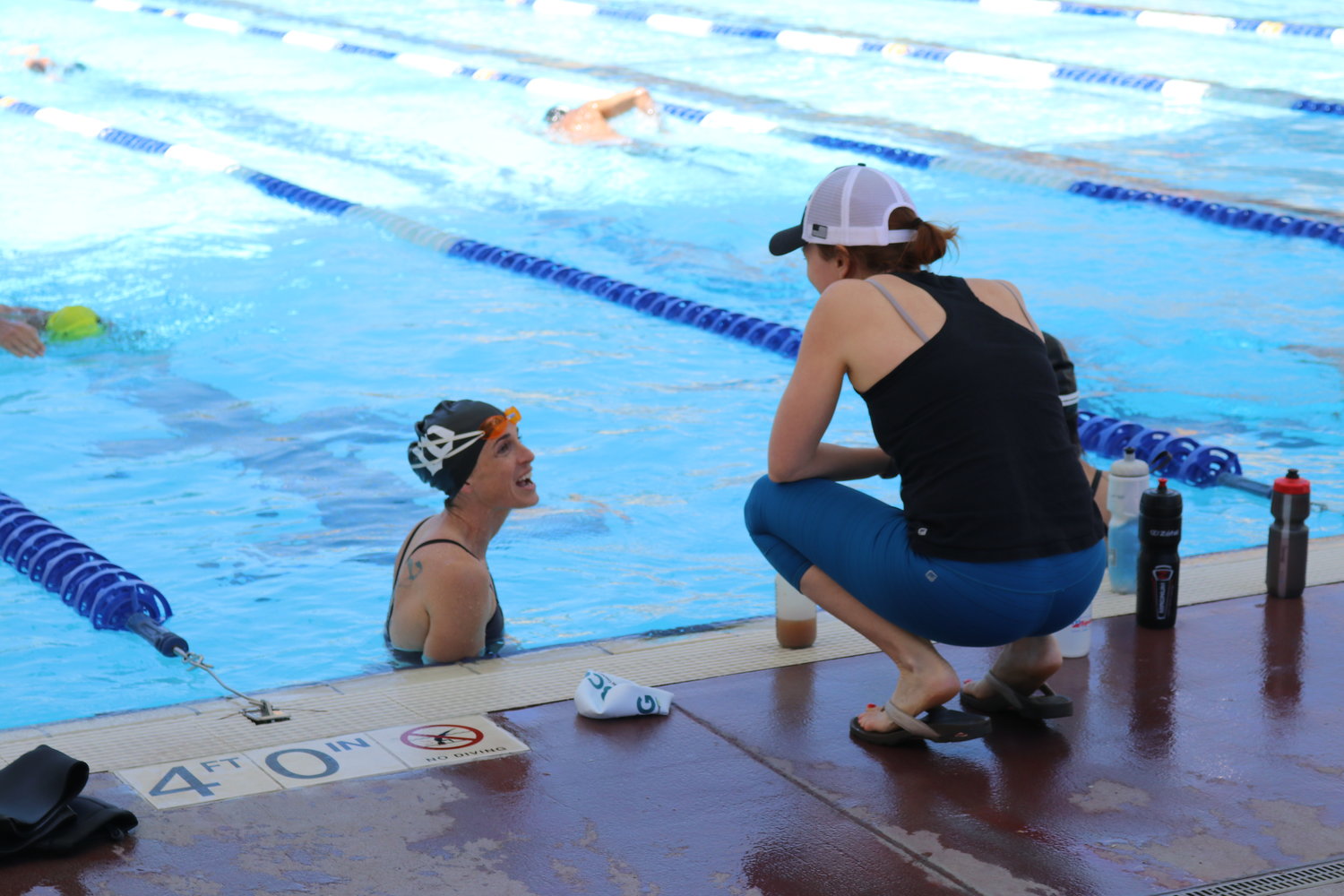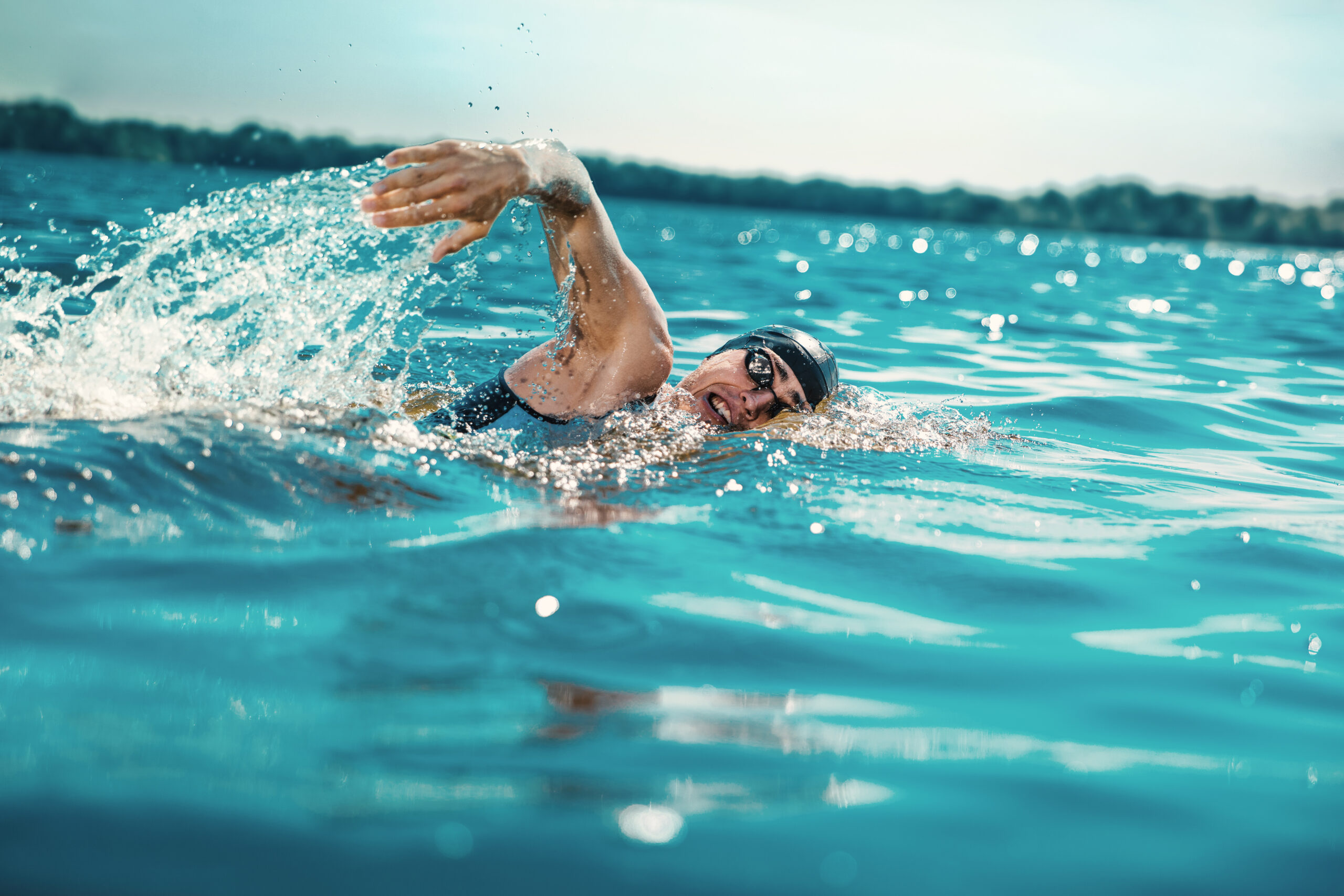

Featured
How To Train For A Triathlon Swim
Modified: March 1, 2024
Train for a triathlon swim and master your technique with our featured tips. Dive into our expert advice for a successful race day.
Introduction
Are you ready to take on the ultimate challenge of a triathlon? The swim portion of a triathlon can be both exhilarating and daunting. Whether you’re new to swimming or have a strong background in the sport, proper training and preparation are crucial for a successful triathlon swim.
In this article, we will guide you through the process of training for a triathlon swim. From choosing the right training plan to developing a strong swimming technique, we’ll cover all the essential aspects to help you excel on race day.
Swimming in a triathlon is not the same as swimming laps in a pool. Open water conditions, such as waves, currents, and navigating around other swimmers, add a whole new level of complexity. Our goal is to provide you with the knowledge and skills to confidently conquer the swim leg of the triathlon.
Whether you’re aiming to complete your first sprint triathlon or preparing for a long-distance event, this comprehensive guide will equip you with the tools you need to improve your performance and ensure a smooth swim transition.
Before we dive in, it’s important to note that this article assumes you have a basic level of swimming proficiency. If you’re a beginner, it’s recommended to first take swimming lessons to learn the essentials of swimming technique and water safety.
Now, let’s get started on your journey to becoming a triathlon swimmer!
Choosing the Right Training Plan
When preparing for a triathlon swim, it’s important to have a well-structured training plan that aligns with your goals and current fitness level. Here are some factors to consider when choosing a training plan:
- Distance: Determine the distance of your triathlon swim and find a training plan that focuses on that specific distance. For shorter races like sprint or Olympic distance, a plan that emphasizes speed and interval training may be more suitable. For longer distance races like a half or full Ironman, a plan that prioritizes endurance and distance training will be essential.
- Time Available: Assess your availability and commitment to training. Some training plans require multiple swim sessions per week, while others may have a more flexible schedule. Choose a plan that aligns with your availability and allows for gradual progression.
- Experience Level: Consider your swimming background and experience. If you’re new to swimming, look for beginner-friendly plans that focus on technique and gradually build endurance. For more experienced swimmers, you may want a plan that challenges you with advanced drills and interval sets.
- Coach or Self-Guided: Decide whether you prefer a coach-led training plan or a self-guided plan. A coach can provide personalized guidance, feedback, and support, which can be beneficial, especially for beginners. However, self-guided plans can also be effective if you’re disciplined and have a good understanding of proper swim training techniques.
Remember, it’s essential to listen to your body and make adjustments to the training plan when needed. It’s better to have a slightly modified plan that suits your individual needs than to risk overtraining or injury by strictly following a plan that doesn’t align with your capabilities.
Once you’ve chosen a training plan, commit to it and be consistent with your swim workouts. Consistency is key in developing your swim skills, building endurance, and improving your overall performance.
Now that you have the basics of choosing a training plan, let’s explore how to develop a strong swimming technique to enhance your triathlon swim.
Developing a Strong Swimming Technique
Having a strong swimming technique is essential for an efficient and fast triathlon swim. Here are some key aspects to focus on when developing your swimming technique:
- Body Position: Maintain a streamlined body position in the water. Keep your body horizontal and parallel to the surface, with your hips and legs near the water’s surface. Avoid sinking or lifting your hips too high, as this can create drag and slow you down.
- Head Position: Keep your head in line with your body and face down, looking towards the pool bottom or the open water horizon. Avoid lifting your head too much, as this can disrupt your overall body position and increase resistance.
- Arm Stroke: Focus on an efficient and powerful arm stroke. Initiate the pull by extending your arm forward, then bend your elbow and pull your hand back in a S-shaped motion. Maintain a steady rhythm and avoid crossing your midline, as this can lead to a zigzag swim path.
- Hand Entry: Enter the water with your fingertips first, followed by your hand, in a relaxed and controlled manner. Avoid slapping the water or entering with a closed fist, as this can create unnecessary resistance.
- Kick Technique: Develop a strong and efficient kick. Keep your legs relatively straight with a slight knee bend, and generate power from your hips and core. Practice a steady and rhythmic kick, avoiding excessive splashing.
- Breathing: Practice bilateral breathing, which means breathing to both sides. This helps to improve your balance and coordination in the water. Experiment with different breathing patterns and find what works best for you.
Working with a swim coach or taking lessons can greatly enhance your technique development. A coach can provide guidance, feedback, and drills tailored to your specific needs. Take advantage of their expertise to refine your technique and become a more efficient swimmer.
In addition to focusing on technique, it’s important to incorporate swimming drills into your training routine. These drills isolate specific aspects of the swim stroke and help improve efficiency and overall form. Let’s explore some essential swimming drills in the next section.
Essential Swimming Drills
Swimming drills are invaluable for refining technique, improving efficiency, and building strength in specific areas of your swim stroke. Incorporating these drills into your training routine can help you become a more proficient and confident triathlon swimmer. Here are some essential swimming drills to consider:
- Flutter Kick Drill: This drill focuses on developing a strong and steady kick. Hold a kickboard or streamline position and kick with a steady, rhythmic motion while maintaining a streamlined body position. Focus on generating power from your hips and maintaining a consistent kick throughout your swim.
- Single Arm Drill: This drill allows you to isolate each arm and focus on the pulling motion. Swim with one arm extended in front of you and the other arm doing the full stroke. Alternate arms after a set distance or time. This drill helps improve your arm mechanics, catch, and pull through the water.
- Catch-Up Drill: This drill helps improve your timing and coordination. Start with both arms extended in front of you. Swim with one arm while keeping the other arm extended until the pulling arm completes a full stroke and touches your other hand. Then switch arms and repeat the process. This drill promotes a longer glide, better body alignment, and a more efficient stroke.
- Breathing Drill: Practice bilateral breathing and work on your breathing technique. Focus on maintaining a straight body position while turning your head to breathe to each side. This drill helps improve balance, body rotation, and lung capacity.
- Open Water Simulation Drills: Since triathlon swims take place in open water, it’s important to simulate those conditions during your training. Practice sighting by looking up periodically to spot a target in the pool or lake. Practice swimming in a crowded area to simulate swimming in close proximity to other athletes.
Beginners should start with basic drills and gradually progress to more advanced drills as their technique improves. Incorporate drills into your training sessions at least once or twice a week, focusing on a specific drill for each session.
Remember to focus on quality over quantity. Take the time to execute each drill with precision and maintain proper form. Over time, these drills will become ingrained in your muscle memory, resulting in a more efficient and effective swim stroke.
Now that you have a solid understanding of swimming drills, let’s dive into building endurance for long-distance swims.
Building Endurance for Long-distance Swims
Long-distance swims in a triathlon require a combination of strength, endurance, and mental fortitude. To prepare yourself for the challenges of a lengthy swim leg, it’s crucial to build your endurance gradually and consistently. Here are some tips to help you increase your swimming endurance:
- Progressive Distance Training: Gradually increase the distance of your swims over time. Start with shorter distances and gradually add more laps or meters to your workouts. This progressive approach allows your body to adapt and build endurance without putting excessive strain on your muscles and cardiovascular system.
- Interval Training: Incorporate interval training into your swim sessions. This involves alternating between periods of high-intensity effort and periods of recovery. For example, swim at a faster pace for a set distance or time, then swim at an easier pace to recover. Interval training helps improve your cardiovascular fitness and increases your capacity to sustain longer swims.
- Longer Continuous Swims: Set aside specific sessions where you focus on completing longer continuous swims. Gradually increase the distance you swim without taking a break. This type of training helps build both physical and mental endurance, preparing you for the demands of the race.
- Technique Efficiency: Improving your swimming technique can greatly enhance your endurance. Focus on maintaining a streamlined body position, reducing drag, and optimizing your stroke efficiency. Efficient technique allows you to swim longer without expending excess energy.
- Mental Training: Endurance swimming requires mental strength and focus. Practice mental training techniques such as visualization and positive self-talk to stay motivated during long swims. Set specific goals for each training session and race to keep yourself motivated and determined.
- Cross-training: Incorporate other forms of cardiovascular exercise into your training regimen. Activities like running, cycling, or HIIT workouts can improve your overall cardiovascular fitness and complement your swimming workouts.
Remember to listen to your body and gradually increase the intensity and duration of your training. It’s important to incorporate sufficient rest and recovery days in your training schedule to allow your body to adapt and avoid overtraining or injuries.
By following these tips and consistently pushing your limits, you’ll build the endurance necessary to confidently tackle long-distance swims in a triathlon.
Now that you have a game plan for building endurance, let’s discuss strategies for open water training.
Open Water Training Strategies
Training for a triathlon swim isn’t just about swimming laps in the pool. To prepare for the open water conditions you’ll encounter on race day, it’s important to incorporate specific open water training strategies into your workouts. Here are some key strategies to consider:
- Simulate Open Water Conditions: Whenever possible, incorporate open water swims into your training routine. Find a local lake, ocean, or river where you can practice navigating in open water. This will help you adapt to different water temperatures, currents, waves, and sighting techniques.
- Practice Sighting: Sighting is the act of looking up to get your bearings and navigate in open water. Incorporate sighting drills into your training sessions to improve your ability to swim in a straight line and stay on course. Practice lifting your head and quickly spotting a distinguishable landmark or buoy.
- Swim in a Group: If possible, swim with a group of other triathletes to simulate the crowded conditions you’ll experience on race day. This will help you get comfortable swimming in close proximity to others, learn to navigate around swimmers, and maintain your focus in a busy environment.
- Practice Drafting: Drafting is a technique where you swim closely behind another swimmer to take advantage of the reduced water resistance. Practice this technique in training to conserve energy and improve your efficiency. Be mindful of the rules and etiquette of drafting to ensure a fair and safe swim.
- Practice Open Water Starts: In triathlons, the swim leg often begins with a mass start, where all participants enter the water together. Practice mass starts in a controlled environment to get comfortable with the chaos and jostling that can occur. This will help you stay calm and focused when the race day adrenaline kicks in.
- Understand Water Conditions: Research and familiarize yourself with the water conditions of the race venue. Factors such as water temperature, currents, and potential hazards should be taken into account during your training. Prepare yourself mentally and physically for the specific challenges you may face.
Open water training can significantly enhance your overall triathlon swim performance. By incorporating these strategies, you’ll be better prepared to handle the unique conditions and demands of the open water on race day.
Now that you’re equipped with open water training strategies, let’s explore how to transition from the pool to open water seamlessly.
Transitioning from the Pool to Open Water
Transitioning from the controlled environment of a pool to the unpredictable conditions of open water can be a challenge. However, with proper preparation and practice, you can make a smooth transition. Here are some key considerations to help you transition from the pool to open water:
- Acclimate to Open Water: Before your race, try to acclimate to open water conditions. Whenever possible, swim in open water to get comfortable with the different sensations and challenges it presents. Practice sighting, swimming through waves or choppy water, and adapting to unfamiliar surroundings.
- Practice Pool Open Water Skills: While training in the pool, incorporate drills and techniques that simulate open water conditions. For example, swim with your eyes closed to simulate reduced visibility, swim with a pull buoy to mimic the feeling of wetsuit buoyancy, or practice bilateral breathing to prepare for waves that may disrupt your breathing pattern.
- Invest in Proper Gear: Open water swimming may require additional gear compared to pool swimming. Consider investing in a quality wetsuit that fits well and provides buoyancy and insulation. Train with the wetsuit beforehand to get used to the added buoyancy and restriction of movement.
- Use Triathlon-Specific Swim Techniques: In open water, it’s important to conserve energy and swim efficiently. Use techniques such as the “sighting and breathing combo,” where you raise your head to sight and take a breath simultaneously, minimizing the time spent looking forward. Additionally, practice sighting techniques to help you swim in a straight line and stay on course.
- Practice Transitions: Transitioning from swimming to biking or running is an important part of a triathlon. Incorporate transitions into your training sessions to get comfortable with the feeling of swimming followed by another activity. Practice removing your wetsuit quickly and efficiently, as well as putting on your swim cap and goggles.
- Join Open Water Swim Groups: Consider joining or participating in open water swim groups or clubs. Swimming with others in open water can provide a supportive and safe environment, as well as the opportunity to learn from more experienced swimmers. These groups often have organized training sessions and can offer valuable tips and advice.
Remember to focus on staying calm and relaxed during the transition to open water. Trust in your training and practice the skills necessary to adapt to the new environment. The more experience you have in open water, the more comfortable and confident you’ll feel on race day.
Now that you’re prepared for the transition, let’s discuss some helpful tips and strategies for race day itself.
Race Day Tips and Strategies
Race day is here, and it’s time to put all of your training and preparation into action. To ensure a successful triathlon swim, consider the following tips and strategies:
- Arrive Early: Get to the race venue early to allow yourself enough time to check-in, set up your transition area, and mentally prepare. Familiarize yourself with the swim course, noting any landmarks or turns that can help with navigation.
- Warm-Up: Prior to your race start, warm up your body by performing some light dynamic stretching and a short swim. This will help get your blood flowing and prepare your muscles for the upcoming swim.
- Position Yourself Strategically: Position yourself in the appropriate wave or starting group based on your estimated swim time. This will minimize the chance of getting caught in a crowd of swimmers who may swim at a different pace than you.
- Control Your Breathing: At the start of the race, take a few deep breaths to calm your nerves and establish a steady breathing pattern. Focus on taking long, controlled breaths to ensure a steady supply of oxygen throughout the swim.
- Find Your Rhythm: Once in the water, find your comfortable rhythm and stick to it. Focus on your technique, maintain a consistent stroke rate, and avoid getting caught up in the frenzy of other swimmers.
- Practice Effective Sighting: Regularly sight throughout the swim to stay on course. Aim to sight every few strokes or as needed, using landmarks or buoys to guide your direction. Keep your head movement minimal to avoid disrupting your overall body position.
- Stay Focused and Positive: During the swim, maintain a positive mindset and keep a focused mindset. If you encounter challenging moments, remind yourself of your training, and stay confident in your abilities. Trust your preparation and believe in your ability to conquer the swim leg.
- Transition Smoothly: As you exit the water, quickly remove your swim cap and goggles, and make your way to the transition area. Practice transitions beforehand to ensure a smooth and efficient changeover from the swim to the next discipline.
Remember, the swim leg is just one part of the triathlon. Pace yourself appropriately to conserve energy for the remaining disciplines. Trust your training and enjoy the experience of competing in a triathlon!
Now that you have a range of race day tips and strategies, let’s shift our focus to the importance of nutrition and hydration during your triathlon swim.
Nutrition and Hydration for Triathlon Swims
Nutrition and hydration are key factors to consider when preparing for a triathlon swim. Proper fueling and hydration during your swim can optimize your performance and help you maintain energy levels throughout the race. Here are some tips to ensure you’re adequately fueled and hydrated:
- Pre-Race Meal: Consume a balanced meal containing carbohydrates, protein, and healthy fats a few hours before your race. This meal should be easily digestible and provide you with sustained energy. Avoid trying any new or unfamiliar foods that may cause digestive issues.
- Hydration: Begin hydrating well in advance of the race. Aim to drink water or a sports drink steadily throughout the day before the race. On the morning of the race, consume a sufficient amount of fluids to ensure proper hydration.
- During the Swim: Depending on the length and duration of your swim, you may not need to consume any calories. However, it’s important to stay hydrated, especially in longer open water swims. If allowed, consider using a hydration pack or flask that can be attached to your wetsuit or gear to drink water during the swim leg.
- Post-Swim Nutrition: After completing the swim leg, prioritize replenishing your energy stores. Consume a combination of carbohydrates and protein to aid in recovery and prepare you for the subsequent disciplines. This may include a recovery drink, energy bar, or a balanced meal.
- Experiment and Practice: Use your training sessions to experiment with different nutrition and hydration strategies. Test various sports drinks, gels, or energy chews to determine what works best for you. Practice consuming these during your longer training swims to ensure your body can tolerate them on race day.
- Listen to Your Body: Pay attention to your body’s signals during training and racing. If you feel thirsty, drink fluids. If you feel hungry or fatigued, consider consuming a small snack or gel. Everyone’s nutritional needs are different, so it’s essential to listen to your body’s cues and adjust accordingly.
Remember, nutrition and hydration are individualized, and what works for one person may not work for another. It’s important to find a strategy that suits your needs and supports your performance. Consider seeking advice from a sports nutritionist or dietitian to develop a personalized nutrition plan.
With proper nutrition and hydration, you’ll optimize your triathlon swim performance and set yourself up for success in the other legs of the race.
Now that you have an understanding of nutrition and hydration, let’s discuss the importance of injury prevention and recovery for triathlon swimmers.
Injury Prevention and Recovery
As with any physical activity, injury prevention and recovery are crucial aspects of triathlon swimming. By taking proactive measures and allowing adequate time for recovery, you can minimize the risk of injuries and ensure a consistent and sustainable training routine. Here are some key strategies for injury prevention and recovery:
- Proper Warm-up: Prior to each swim session, engage in a thorough warm-up routine. Incorporate dynamic stretches and mobility exercises to prepare your muscles and joints for the demands of swimming. Gradually increase the intensity of your warm-up to get your body ready for the upcoming training or race.
- Strength and Mobility Training: Incorporate strength and mobility exercises into your cross-training routine. Strengthening your core, upper body, and lower body muscles can help improve your swimming technique and reduce the risk of overuse injuries. Additionally, focus on mobility exercises that target areas prone to tightness, such as the shoulders and hips.
- Listen to Your Body: Pay attention to any discomfort or pain during training. If you experience any persistent pain or discomfort, consult with a healthcare professional or sports therapist. Ignoring or pushing through pain can lead to further injury and hinder your progress.
- Rest and Recovery: Allow your body ample time to rest and recover between training sessions. This includes getting sufficient sleep, taking regular rest days, and incorporating active recovery activities, such as light swimming or gentle stretching. Rest and recovery are crucial for muscle repair and adaptation.
- Cross-Train: Incorporate activities other than swimming into your training routine to prevent overuse injuries. Engaging in activities like cycling, running, yoga, or strength training can help develop overall fitness, reduce muscular imbalances, and provide variety to your training regimen.
- Stretching and Foam Rolling: Regularly stretch your muscles after workouts to maintain flexibility and prevent muscle tightness. Foam rolling can also be beneficial for releasing muscle tension and improving recovery. Focus on areas that commonly become tight, such as the calves, quadriceps, hamstrings, and shoulders.
- Proper Technique and Progression: Ensure you’re using proper swimming technique to avoid placing unnecessary stress on your body. Work with a swim coach or take lessons to improve your form and reduce the risk of injury. Gradually progress your training intensity and volume to allow your body to adapt to the demands of swimming.
Remember, prevention is better than cure when it comes to injuries. By incorporating these strategies into your training routine and listening to your body, you’ll minimize the risk of injury and maintain your ability to train consistently and enjoyably.
Now that you have the tools to prevent injuries and promote recovery, it’s time to wrap up this comprehensive guide. Congratulations on your commitment to training for a triathlon swim, and best of luck on race day!
Conclusion
Congratulations! You’ve reached the end of this comprehensive guide on training for a triathlon swim. Throughout this article, we have covered various aspects of triathlon swim preparation, from choosing the right training plan to honing your technique, building endurance, and transitioning to open water. We’ve also discussed race day strategies, nutrition and hydration, and injury prevention and recovery.
By implementing the tips and strategies outlined in this guide, you’re well on your way to becoming a confident and efficient triathlon swimmer. Remember, consistency, patience, and dedication are key in achieving your goals and performing your best on race day.
As you continue your training journey, keep in mind that everyone’s progress will vary. It’s important to listen to your body, adapt the strategies to suit your individual needs, and seek guidance from professionals when necessary.
Lastly, enjoy the process! Triathlon swimming is a challenging and rewarding endeavor. Embrace the journey, celebrate your achievements along the way, and don’t forget to have fun. Triathlon swimming is not just about the destination; it’s about the growth and personal transformation you experience during the process.
Now, go out there and dive into your triathlon training with confidence. The swim leg may be just the beginning, but with proper preparation, technique, endurance, and mental strength, you’re ready to conquer the open water and make a splash in your upcoming triathlon!
